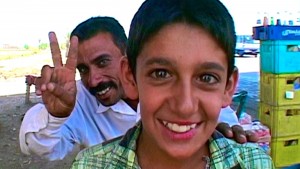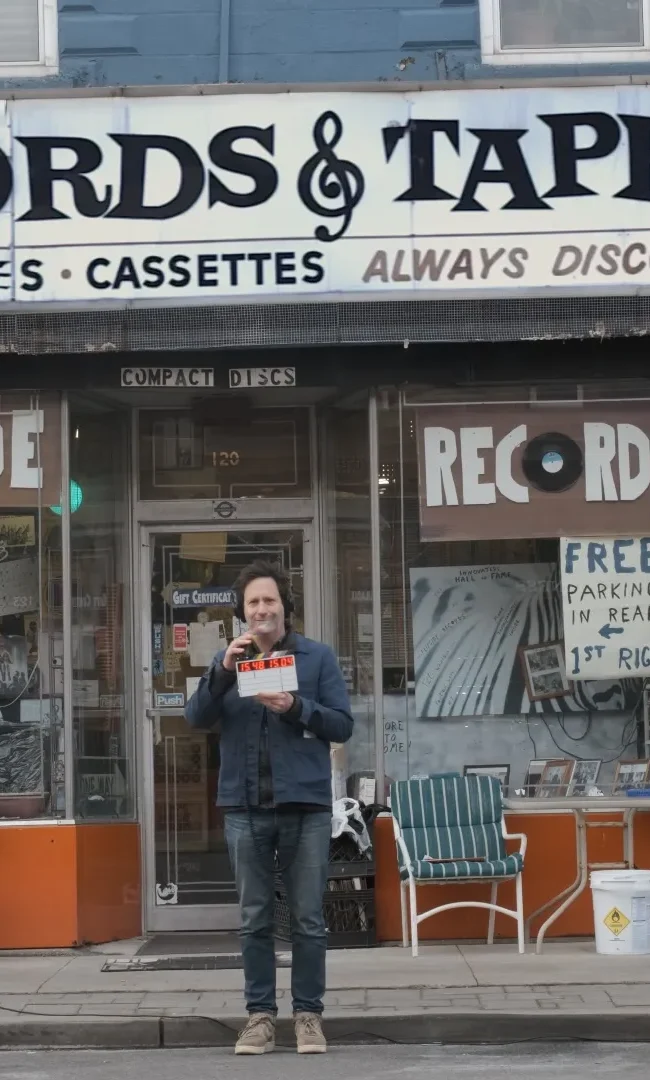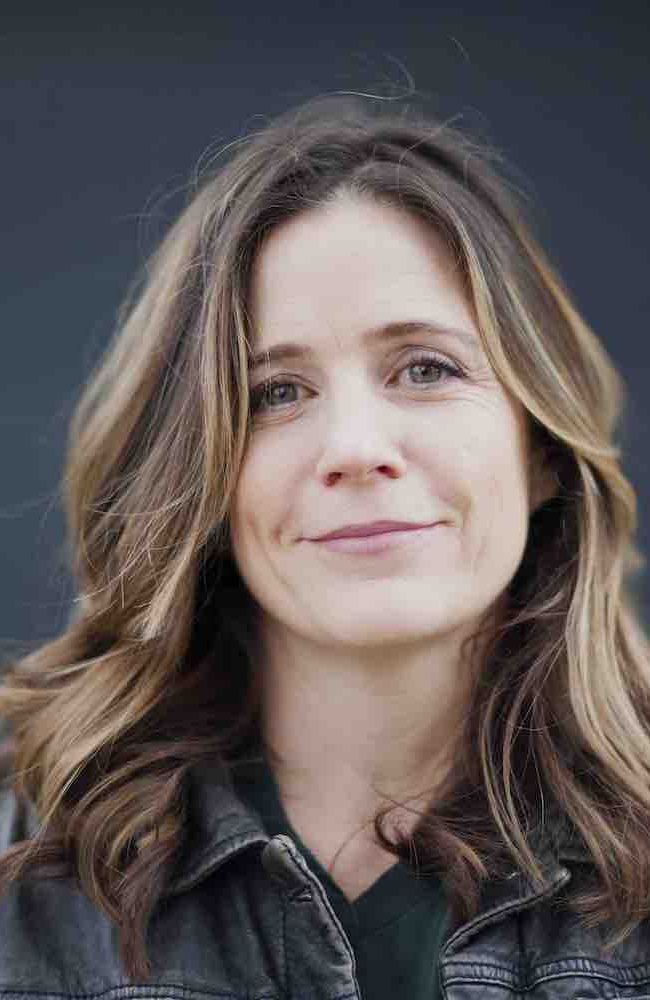2016 TRUE/FALSE FEST WRAP-UP
 In the heart of America, the 13th annual True/False Film Festival, wrapped up a few days ago and we cannot stop talking and thinking about it. The premiere non-fiction festival in the U. S. (although, Full Frame and Big Sky, may have some say in this proclamation too), takes place in Columbia, Missouri on the University of Missouri campus, True/False has become haven for documentarians and filmgoers alike. The four day festival has been receiving accolades since its inception from almost every filmmaker who attends the fest, even more proclaimed it their very favorite festival they attend before many of the screenings. It is still unbelievable how most of the residents of Columbia get involved in every which way but everywhere you go, you see so many of the locals tirelessly working well before the festival starts, deep into the night, setting up events, parties, and banners. The fest employs some 1,000+ volunteers, who are the backbone to the festival handling festival tickets, merchandise, and others help out with crowd control at the screenings, handling the lines with the ever vocal “Queens” taking court by announcing all the FAQ’s, prior to screenings, as many of them dress in extravagant dresses, filled with glitter, make-up, glasses, and fairy wands.
In the heart of America, the 13th annual True/False Film Festival, wrapped up a few days ago and we cannot stop talking and thinking about it. The premiere non-fiction festival in the U. S. (although, Full Frame and Big Sky, may have some say in this proclamation too), takes place in Columbia, Missouri on the University of Missouri campus, True/False has become haven for documentarians and filmgoers alike. The four day festival has been receiving accolades since its inception from almost every filmmaker who attends the fest, even more proclaimed it their very favorite festival they attend before many of the screenings. It is still unbelievable how most of the residents of Columbia get involved in every which way but everywhere you go, you see so many of the locals tirelessly working well before the festival starts, deep into the night, setting up events, parties, and banners. The fest employs some 1,000+ volunteers, who are the backbone to the festival handling festival tickets, merchandise, and others help out with crowd control at the screenings, handling the lines with the ever vocal “Queens” taking court by announcing all the FAQ’s, prior to screenings, as many of them dress in extravagant dresses, filled with glitter, make-up, glasses, and fairy wands.
No words can truly describe how hard each year festival co-directors, or co-conspirators as they are listed in the festival program, Paul Sturtz and David Wilson (along with programmers, Chris Boeckmann, Pamela Cohn and guest programmer Nick Pinkerton) have managed to outdo themselves again for the 2016 edition. One of the newest additions to T/F this year was the specialty live-action event of “Lost Letters” which I missed, but heard nothing but excellent reviews regarding an hour-long puzzle solving performance, where you (or a group of up to ten folks) are given sixty minutes to complete a live narrative with actors and clues to help guide you through the noodle-scratching experience, but the outcome is determined by sheer wit and teamwork. I for one hope T/F continue this event as it will be on my “must do list” next year.
The one event I have gone to in all three years of attending T/F is still the best two hours to spend at T/F, “Gimme Truth” where host Johnny St. John, challenges filmmakers and audiences to guess whether or not, locally made documentaries are “True” or “False.” The event is always a genuine crowd-pleaser and this year might have been the best yet. Directors Kirsten Johnson (Cameraperson), Morgan Neville (The Music of Strangers) and Roger Ross Williams (Life, Animated) were judges who had to determine if the ten selections were “fact” or “fiction.” This year’s crop were some of the best including Steve’s Legos, directed by Morgan Lieberman, which ended up winning the top prize by cleverly using Legos to describe how Steve had been held up at a bank where he worked. The perpetrator was played by failed Star Wars sidekick, Jar Jar Binks and it was a riotous hit. Another highlight was Maggie Noble’s College House where 23 students lived in a house to save on rent. Although the film was “false,” it still played right into the hands of the packed audience.
Yes, I promise you, this is a film festival. There are so many wonderful events outside (March March parade, @ction Party!, Campfire Stories, and the True Life “fun” Run) besides sitting in a movie theater watching some of the best documentaries traveling the festival circuit. Plus the festival was blessed with some terrific weather, which many of the ringleaders lead off their intro’s before screenings mentioning how beautiful it was outside. The point being: you could go to T/F and not even attend a single film screening, but could strictly stick with attending the events, and still it would be a captivating and memorable experience, nonetheless.
This is a film festival, really. Of the eleven films I saw, the one with biggest impact was easily Iraqi-French director Abbas Fahdel’s five and a half hour epic, Homeland (Iraq Year Zero). The two part film (shown with a 30-minute intermission) explored how Fahdel spent a year and half with mostly friends and family in Iraq chronicling their everyday life, well knowing they are preparing the impending U.S. invasion on Iraq under Saddam Hussein in 2002. Starting with Part 1: Before the Fall Fahdel behind his video camera, giving the film its verite style andcertainly a grainy quality, shows his family getting ready for the worse as they begin stocking up on supplies, building a drinking well in their yard, taping up the windows and awaiting debris to impact them. This has a subtle and horrifying affect, especially through a lens from a relative versus from an investigated reporter exploiting the fact or leaning toward “propaganda” views. The film also features interviews with family members and surprisingly his 12-year-old nephew Haidar seems to be the most optimistic about the entire impending war even when it is noted over an hour into the film, through on-screen text, Haidar will be killed shortly after the U.S. invasion. Yet this also brings the viewer closer to his death, and leaves a sense of dread for the rest of its running time.
Part 2: After the Battle, takes place two weeks after the U.S. invasion around April 2003. The damage has been done, leaving many homeless, hungry and no where to care, asking American troops for help or what happens next or who will be leading a hand in helping them rebuild their homes and families. It’s an emotional, gut-wrenching experience knowing full well the Americans were responsible for this destruction. It is a complete 180 from Before the Fall where many of the Iraqis were huge supporters of Hussein until after the invasion when many begin rebelling and shouting their hatred for Hussein and tearing down posters and ruining statues of him. Even images of children playing is one of the happier moments in the film, despite their school being completely destroyed with only a sign remaining, brings a deeper focus of what is the outcome for families to move on. The five hour running time of Homeland (Iraq Year Zero) is going to cause audiences to dismiss or skip it and yes, its long running time goes slack at times. Still, it is one of the most crucial documentaries to emerge in the past few years and very few could ever dream of seeing the “other side” of the war. Fahdel’s access and patience is flawless, even if the Iraq War was not always easy to understand. Homeland may not answer that question but it does make a case to witness the devastation with open eyes and a clear conscious, of really was the “enemy.”
Former Congress member Anthony Weiner’s ups and downs are broken down in Weiner co-directed by Josh Kriegman and Elyse Steinberg’s enthralling and morbidly fascinating insider look at his 2013 New York mayoral campaign. Starting off with Weiner showboating in C-SPAN videos, dominating the Senate floor with his high-energy speeches and ambitious plans on leading the charge for the Democrats igniting his passion for turning America around. That is until, the bigger story hits with news of Weiner sending explicit sexual photos via cell phone (otherwise dubbed, “Weinergate”) eventually leading to his resignation from Congress in 2011. Kriegman and Steinberg then began following Weiner, along with his wife Huma Abedin (Hilary Clinton’s closest aide and vice chairwoman on her 2016 presidential campaign) and their family, where the filmmakers were given more access than one could have ever imagined. (Kriegman is a former aide for Weiner in the Senate, perhaps this is a reason why Weiner gave them as much access as he did, by trusting him.)
Coming across as a driven man and more importantly, a likable guy on camera, Weiner started out strong with his 2013 mayoral push, until more sexting photos and reports were announced and this is when Weiner seemed to keep falling on his own sword again and again. Weiner denied the new accusations, even after admitting the sexting was in the past, but the pressure kept coming and sabotaged his entire campaign after basically leading eight weeks before the election. In light of what is happening in American politics in 2016, perhaps overexposure is a blessing for failed campaigns. Weiner opens up the floodgates by giving too much access to the filmmakers, instead of keeping both strategy and strength off-camera, which is a wonder for the audience, but determent to its subject. However, it goes further in exposing everyone and everything out in the open. Case in point; in one memorable TV interview with politic pundit Lawrence O’Donnell, he wonders what is wrong with Weiner, and in hindsight this turns into the funniest and saddest moment perhaps in the film. At that point Weiner thinks he’s made an impression yet Abedin cannot bear to watch the interview and thinks he embarrassed himself on national TV. This is only one example of said overexposure. One of the big questions in the film is why does Abedin decide to stay with Weiner after these scandals arise? Kriegman and Steinberg’s film never really answer the biggest question in terms of what was the ultimate downfall of Weiner’s failed bid in the mayoral campaign, aside from the sexting scandal, but the film does elevate a different view from the other side of politics rarely seen, one with plenty of juicy coverage and POV, where any documentarian could only dream of all this overexposure.
Taking a more reserved look at a more volatile subject, director Tony Stone’s terrific and melancholy Peter and the Farm, captures a scenario, which seems to be a lost resource in the U.S. today, the American farmer. Peter Dunning has been working on Mile Hill Farm in Vermont for over 35 years and year-by-year it is slowly tearing his soul apart. At his farm he liveswith his trustworthy dog, his sheep and cows and works on keeping the farm alive, even if it means using a “survival of the fittest” method. (There is one graphic scene involving a death of a sheep, I for one, do not want to revisit.) With no friends or family in sight, (he says his children would not talk to him, if he called) Dunning ‘s life is mostly a shaggy one of working and drinking all day, acting as if he has lost everything already. In one dramatic statement Dunning declares, “I care more about the farm, than I do about me” and it brings him to tears. Living his life mostly in solitude, Peter is a broken human, but not one without a ripe understanding of his place in these desperate times for farmers, losing more and more crops, animals, and money year after year. Stone’s narrative feels a little like a Hemingway prose, as his cinematographing shows a difficult tapestry in Peter figuring out a way to either keep his farm together or die trying. The film is a haunting depiction of loneliness and struggle, but nevertheless, a compelling and striking original one. Peter and the Farm has plenty of secrets to uncover (including a surprising discovery at the end of the first act) and answers that may never be solved. And while Stone crafts a film with no happy ending it’s one helluva of a character study, unlike anything I have seen in recent memory. And that is the truth.
– Jim Brunzell III (@JimBrunzell_3)












